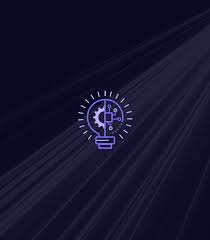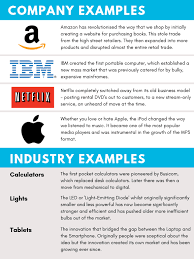The Impact of Clayton Christensen’s Theory of Disruptive Innovation
Clayton Christensen, an influential figure in the field of innovation and business management, introduced the concept of disruptive innovation in his seminal work. His theory has reshaped the way companies approach growth and competition in today’s fast-paced business environment.
According to Christensen, disruptive innovation occurs when a new product or service enters the market and eventually displaces established competitors by providing a simpler, more convenient, or more affordable alternative. This process often starts in niche markets or with underserved customers before expanding to challenge industry giants.
One of the key insights of Christensen’s theory is that established companies can be blindsided by disruptive innovations because they focus on serving their existing customers and improving their current products rather than anticipating future market needs. This creates an opportunity for agile startups and innovative newcomers to disrupt traditional business models and capture market share.
Christensen’s research has shown that successful companies are those that not only focus on sustaining innovations to meet current customer demands but also invest in exploring new markets and technologies that have the potential to disrupt their own industry. By embracing disruptive innovation, organisations can stay ahead of the curve and remain competitive in an ever-changing landscape.
In conclusion, Clayton Christensen’s theory of disruptive innovation has had a profound impact on how businesses approach growth and adapt to technological advancements. By understanding the principles behind disruptive innovation, companies can navigate uncertainty, foster creativity, and drive sustainable success in an increasingly disruptive world.
Five Advantages of Clayton Christensen’s Disruptive Innovation Theory
- Encourages companies to focus on future market needs rather than solely on current customer demands.
- Helps identify opportunities for growth and innovation in underserved niche markets.
- Promotes agility and adaptability in the face of technological advancements and industry disruptions.
- Encourages organisations to invest in exploring new technologies and business models to stay competitive.
- Provides a framework for understanding how startups can challenge established companies through disruptive products or services.
Challenges of Disruptive Innovation: Market Instability, Resource Misallocation, and Economic Disruption
- Disruptive innovation can lead to market uncertainty and instability as established companies may struggle to adapt quickly enough to new entrants.
- Overemphasis on disruptive innovation may divert resources away from sustaining innovations that are essential for maintaining core business operations.
- The process of disruptive innovation can disrupt traditional industry structures, leading to job losses and economic challenges in certain sectors.
Encourages companies to focus on future market needs rather than solely on current customer demands.
Clayton Christensen’s theory of disruptive innovation advocates for a crucial shift in companies’ strategic focus by urging them to look beyond fulfilling existing customer demands and instead concentrate on anticipating and meeting future market needs. By emphasising the importance of exploring emerging trends and technologies, businesses can position themselves proactively to address evolving consumer preferences and stay ahead of the competition. This approach not only fosters long-term sustainability but also cultivates a culture of innovation that enables companies to adapt and thrive in dynamic market environments.
Helps identify opportunities for growth and innovation in underserved niche markets.
Clayton Christensen’s theory of disruptive innovation is instrumental in helping businesses identify opportunities for growth and innovation in underserved niche markets. By recognising the potential of catering to overlooked customer segments with simpler, more affordable solutions, companies can tap into new sources of revenue and market share. This proactive approach not only fosters creativity and entrepreneurship but also enables organisations to stay ahead of competitors by exploring uncharted territories and meeting the evolving needs of diverse consumer groups.
Promotes agility and adaptability in the face of technological advancements and industry disruptions.
Clayton Christensen’s theory of disruptive innovation promotes agility and adaptability in the face of technological advancements and industry disruptions. By encouraging companies to anticipate and embrace change, this approach empowers organisations to stay nimble and responsive in a rapidly evolving business landscape. Embracing disruptive innovation allows businesses to proactively address emerging trends, explore new opportunities, and pivot their strategies to remain competitive in an ever-changing environment. This proactive mindset not only fosters resilience but also enables companies to harness innovation as a driving force for growth and long-term success.
Encourages organisations to invest in exploring new technologies and business models to stay competitive.
Clayton Christensen’s theory of disruptive innovation encourages organisations to invest in exploring new technologies and business models to stay competitive in today’s rapidly evolving market landscape. By embracing this proactively, companies can not only adapt to changing consumer preferences and technological advancements but also anticipate future market trends. This strategic approach enables businesses to remain agile, innovative, and ahead of the curve, ensuring long-term sustainability and success in an increasingly competitive environment.
Provides a framework for understanding how startups can challenge established companies through disruptive products or services.
Clayton Christensen’s theory of disruptive innovation offers a valuable framework for comprehending how startups can effectively challenge established companies by introducing disruptive products or services into the market. By highlighting the importance of targeting underserved markets and offering innovative solutions that cater to unmet needs, Christensen’s theory empowers startups to disrupt traditional industries and compete with larger, more established competitors. This framework not only encourages entrepreneurial creativity and risk-taking but also underscores the potential for small businesses to drive significant change and reshape competitive landscapes through strategic innovation.
Disruptive innovation can lead to market uncertainty and instability as established companies may struggle to adapt quickly enough to new entrants.
Disruptive innovation, as proposed by Clayton Christensen, can introduce a significant challenge for established companies as they may find it difficult to adapt swiftly to the emergence of new entrants in the market. This can result in heightened market uncertainty and instability, as traditional industry leaders may struggle to pivot their strategies and offerings to effectively compete with disruptive newcomers. The rapid pace of change brought about by disruptive innovation can create a sense of vulnerability for established companies, prompting them to reevaluate their business models and embrace a more agile approach to stay relevant in an evolving landscape.
Overemphasis on disruptive innovation may divert resources away from sustaining innovations that are essential for maintaining core business operations.
An important critique of Clayton Christensen’s theory of disruptive innovation is that an overemphasis on pursuing disruptive innovations may lead companies to divert resources and attention away from sustaining innovations that are crucial for sustaining core business operations. While disruptive innovations have the potential to drive growth and open up new opportunities, neglecting investments in sustaining innovations, which focus on improving existing products and processes, can weaken a company’s competitive position in the long term. Balancing the pursuit of disruptive and sustaining innovations is essential for organisations to maintain a healthy innovation portfolio and ensure continued success in both current and future markets.
The process of disruptive innovation can disrupt traditional industry structures, leading to job losses and economic challenges in certain sectors.
The process of disruptive innovation, as theorised by Clayton Christensen, has a significant downside in that it can disrupt traditional industry structures, resulting in job losses and economic challenges in certain sectors. When disruptive technologies or business models enter the market, they have the potential to render existing products or services obsolete, leading to downsizing or even closure of established businesses. This disruption can have ripple effects on employment levels and economic stability within affected industries, requiring proactive strategies to mitigate the negative impacts on workers and communities.




